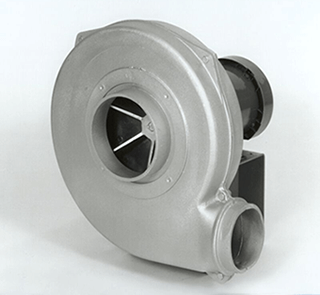 Having some basic technical knowledge can go a long way in making the right fan choice for your application. In a previous post we looked at basic fan laws and how understanding these laws can help in avoiding fan application problems. In this post, we will take a look at understanding fan curves and how they demonstrate fan performance.
Having some basic technical knowledge can go a long way in making the right fan choice for your application. In a previous post we looked at basic fan laws and how understanding these laws can help in avoiding fan application problems. In this post, we will take a look at understanding fan curves and how they demonstrate fan performance.
When designing a fan application, it is important to get the fan performance curves from the fan manufacturer. Basic fan performance data includes:
- CFM (Cubic Feet per Minute) — the measure of air volume moved by the fan
- RPM (Revolutions per Minute) – the number of revolutions in every minute
- SP (Static Pressure) – the resistance to airflow (friction) caused by the air moving through the system
- BHP (Brake Horse Power) – the horse power required by the fan
These curves illustrate the performance characteristics of specific types of fans, including areas of instability, or the rate of change between flow and pressure. A basic knowledge of performance curves will allow a fan buyer or specifier to make decisions concerning fan selection, fan and system adjustments, or other fan application details.
In the case of most fans, performance curve data is generated by connecting a fan to a laboratory test chamber. The test procedures are extremely specific and followed as detailed in the Air Movement and Control Association (AMCA) Standard 210 to assure consistent and accurate readings. Data points are collected incrementally at specific RPMs as the flow is modulated from full closed to full open. The information collected is used to develop digital selection programs and published capacity tables to be used by system designers and end users.
Fan performance curves should allow a reader to quickly determine the characteristics of a fan’s performance. This would include factors such as stability, increasing or non-overloading BHP, and acceptable points of operation.
How a fan performs is based on certain flow characteristics as the air passes over the fan wheel blades, and varies according to the type of fan or the wheel type (forward-curved, backwardly-inclined, radial, radial-tip, or axial). Not only are performance characteristics different for each fan type, performance characteristics may also vary from manufacturer to manufacturer, depending upon the design.
G Squared is here to assist you in understanding fan performance curves and how to use them to select the proper fan for your application.


